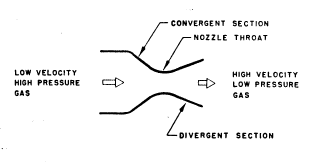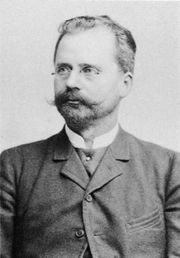de Laval, Gustav Patrik (1845–1913)

Figure 1. De Laval nozzle.
Gustav de Laval was a Swedish engineer of French descent who, in trying to develop a more efficient steam engine, designed a turbine that was turned by jets of steam. The critical component – the one in which heat energy of the hot high-pressure steam from the boiler was converted into kinetic energy (energy of motion) – was the nozzle from which the jet blew onto the wheel. de Laval found that the most efficient conversion occurred when the nozzle first narrowed, increasing the speed of the jet to the speed of sound, and then expanded again. Above the speed of sound (but not below it) this expansion caused a further increase in the speed of the jet and led to a very efficient conversion of heat energy to motion.
Nowadays steam turbines are the preferred power source of electric power stations and large ships, although they usually have a different design – to make best use of the fast steam jet, de Laval's turbine had to run at an impractically high speed. But for rockets the de Laval nozzle (see below) was just what was needed.
After earning his PhD at the age of 27, de Laval worked as a technical engineer at a steel mill in his home village. In 1877, he began developing a high-speed centrifugal cream separator, a significant advance in butter-making. He perfected a vacuum milking machine in 1913. About 1882, he began his important work on steam engines and turbines.
 |
| Figure 2. Gustav de Laval.
|
de Laval nozzle
The de Laval nozzle (Fig 1) is a device that efficiently converting the energy of a hot gas to kinetic energy. Originally used in some steam turbines, it is now used as the nozzle design in practically all rockets. By constricting the outflow of the gas until it reaches the velocity of sound and then letting it expand again, an extremely fast jet is produced.


